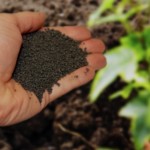Azaleas, with their vibrant blooms and lush foliage, are a beloved addition to many gardens. To keep these beautiful shrubs healthy and thriving, it’s crucial to fertilize them at the right time. In this guide, we’ll explore the best practices for fertilizing azaleas, including when, how, and why you should do it.
Understanding Azaleas
Before we dive into the timing of fertilization, let’s get to know azaleas a bit better:
What Are Azaleas?
Azaleas are a type of flowering shrub known for their striking, trumpet-shaped flowers. They come in a wide range of colors, from soft pastels to vibrant reds and purples. Azaleas are prized for their ability to brighten up gardens in spring and early summer.
Azalea Varieties
There are two primary types of azaleas: evergreen and deciduous. Evergreen azaleas retain their leaves year-round, while deciduous azaleas shed their leaves in the fall. Understanding the type of azalea you have can help you care for it appropriately.
The Importance of Fertilizing Azaleas
Fertilizing azaleas is essential for several reasons:
Nutrient Boost
Azaleas, like all plants, require essential nutrients to grow and bloom. Fertilization provides these nutrients, ensuring your azaleas have the fuel they need to thrive.
Soil Improvement
Fertilizers can improve soil quality by enhancing its nutrient content. This, in turn, promotes healthy root development and overall plant health.
Flower Production
Proper fertilization encourages azaleas to produce more vibrant and abundant flowers, making your garden even more stunning.
When to Fertilize Azaleas
Timing is crucial when it comes to fertilizing azaleas. Here are some key considerations:
Spring Fertilization
H2: Spring: The Ideal Time for Azalea Fertilization
Spring is the primary fertilization season for azaleas. Wait until after the last frost has passed and the soil has thawed. Typically, this means fertilizing in early to mid-spring, around April or May, depending on your location.
H3: Early Spring Fertilization
For a gentle start to the growing season, consider applying a slow-release, balanced fertilizer with a 10-10-10 or 14-14-14 NPK (Nitrogen-Phosphorus-Potassium) ratio. This provides a steady supply of nutrients throughout the growing season.
H3: Mid-Spring Fertilization
Around mid-spring, azaleas benefit from a boost of phosphorus to encourage flower production. Look for a fertilizer with a higher phosphorus content, such as a 15-10-10 or similar ratio. This helps ensure a spectacular bloom.
Fall Fertilization
H2: Fall Fertilization: An Optional Extra
While spring is the primary fertilization period, some gardeners choose to fertilize azaleas lightly in the fall. This supplementary feeding can help strengthen the plants before winter. However, be cautious not to over-fertilize, as this can lead to late-season growth that’s vulnerable to frost damage.
How to Fertilize Azaleas
Now that you know when to fertilize your azaleas, let’s explore how to do it:
Preparation
Before fertilizing, water your azaleas thoroughly if the soil is dry. Moist soil allows for better nutrient absorption.
Application
H2: The Right Way to Apply Fertilizer
When applying fertilizer, follow these steps:
- Measure: Determine the recommended amount of fertilizer based on your azalea’s size and the specific product you’re using.
- Spread: Distribute the fertilizer evenly around the drip line of the plant, which is the area beneath the outermost branches. Avoid piling the fertilizer near the base of the plant, as this can harm the roots.
- Mix: Gently work the fertilizer into the top layer of soil using a rake or hand tool. Be careful not to damage the shallow roots.
- Water: After applying the fertilizer, water your azaleas again. This helps to activate the nutrients and carry them down to the roots.
Fertilizer Selection
H2: Choosing the Right Fertilizer
Selecting the right fertilizer is essential for azaleas:
- Balanced Fertilizers: A balanced, slow-release fertilizer with a ratio like 10-10-10 or 14-14-14 provides essential nutrients for overall health.
- Phosphorus-Rich Fertilizers: For encouraging flower production, choose a fertilizer with a higher phosphorus content, such as 15-10-10.
- Organic Options: Organic fertilizers are a natural choice for those who prefer a more sustainable approach to gardening.
Common Questions About Azalea Fertilization
H2: Frequently Asked Questions
Q1: Can I use general garden fertilizer on azaleas? A1: Yes, you can use a balanced, slow-release garden fertilizer on azaleas. However, selecting a fertilizer formulated for acid-loving plants is even better.
Q2: Is it possible to over-fertilize azaleas? A2: Yes, over-fertilizing can harm your azaleas. Always follow the recommended dosage on the fertilizer packaging.
Q3: Can I fertilize my azaleas during the summer? A3: It’s generally not recommended to fertilize azaleas in the summer. Stick to spring and, optionally, fall fertilization.
Q4: Are there any signs that my azaleas need fertilizing? A4: If your azaleas have pale or yellowing leaves, reduced flowering, or slow growth, it may be time to fertilize.
Q5: Can I use homemade compost as fertilizer for azaleas? A5: Yes, homemade compost can be an excellent natural fertilizer for azaleas. Just ensure it’s well-composted and not too rich.
In Conclusion
Fertilizing azaleas is a crucial aspect of their care. By timing your fertilization correctly and using the right products, you can ensure your azaleas thrive, producing stunning blooms that brighten your garden. Remember to follow the recommended dosage, water after application, and enjoy the beauty your well-fertilized azaleas bring to your outdoor space. Happy gardening!






